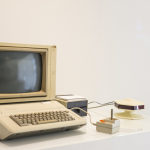Price is usually the determining factor when buying a printer. Although this is a good basis, it should not be the final straw to purchasing a machine. True, a printer is purposely for churning out duplicate of texts and images from an input device. And as long as it delivers as expected, then users will be satisfied with their machine. However, there are other factors that users should consider before making a purchase.
Printer features and functionalities are important facets that must be looked into especially when buying a multifunction machine. This type of printer incorporates other functions including scan, fax, and copy. And while it seems that these functions need no further ado, you might be taken by surprise.

Multifunction Printer – Print, Scan, Copy, and Fax Specifications to Consider
Print. As mentioned above, this is the primary function of a printer – to produce physical copies of digital texts and images. Yet printers are not created similarly; some offer better qualities than others. As such, laser printers are cutout for texts and simple graphic prints, while inkjet printers are perfect for digital photos and images. Also, the former can produce faster prints than the latter due to differences in technological makeup.
1stQuestion to ask: What type of printer will meet the workplace requirement?
Scan. A scan feature involves the process of turning a physical copy of document or image into digital form. The digital form is then stored and retrieved to and from a digital storage disk; then, edited with the use of specified software or compressed for web broadcast.
This printer functionality is very useful for offices and businesses. It makes the work much easier, thereby ensuring that employees are productive all throughout the workday. However, like a standalone scanner, the scan feature in MFPs has limitations. MFPs cannot handle the same sizes of transparencies. Normally, it is limited to 35mm. Moreover, if you plan to connect over a network, make sure that the scan feature works on a network.
2ndQuestion to ask: What type of paper sizes do you usually scan? Will you connect over a network?
Copy. The copy feature is probably the most utilized function of an MFP (in close competition with the print feature). Almost always, the need to duplicate files is prevalent. Thus, it is important to assess the copy practices and copy requirements of a workplace. Small to medium sized offices require a little less than larger ones. So then again, make sure that the copy function is able to meet the demands of a workplace. Additionally, some MFPs need a computer for copying.So if you want to copy with the computer off, make sure that the multifunction printer will work as a standalone copier
3rdQuestion to ask: What is the monthly volume of copies in your workplace? Will you require a MFP that can work as a standalone copier?
Fax. A fax feature almost always includes standalone faxing, which you control through the MFPs keypad. However, it does not necessarily include a PC Fax function; faxing documents directly from your PC without having to print them first. PC Fax can be in the form of a fax utility, a fax driver that you use like a print driver, or both.
4thQuestion to ask: Will you require a PC Fax function?
How to Choose the Perfect Multifunction printer for your need?
To sum up what has been specified above. Price is not the only determinant in purchasing a multifunction printer. The print, scan, copy, and fax features must be taken into consideration. To help you decide or trim down the printer selections, assess your practices and list your requirements. This proves to be tedious but it will help you make a good purchase.
If the MFP that fits meets your demand is a bit costly, don’t despair. You can take a breather since what you will purchase is dependable and will not easily break despite the demands of the workplace. Besides, you can always cut costs in other ways. Rather than using OEM cartridges, you can opt for third party consumables like remanufactured cartridges, ink refill kits, and toner refill kits to reuse empty cartridges.











Leave a Reply